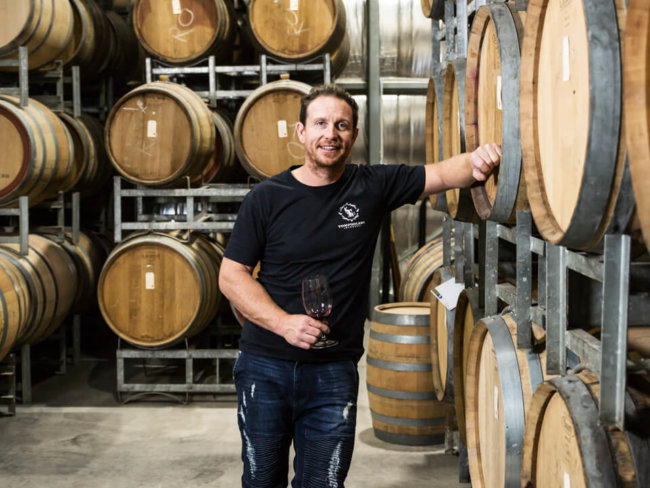Emerging out of the Penfolds winemaking graduate program, then going on to spend some considerable time working in the Southcorp machine, while also inadvertently becoming somewhat of a poster child for the Parker-driven American fascination for South Australian red wine, it would be easy to make some assumptions about the kind of wines Corinna Wright makes with Oliver’s Taranga. And, well, you’d likely be fairly wide of the mark. Wright worked both with the Australian giant as well as American goliath Gallo, but her approach to handling the fruit from her family’s 180-year-old property, Taranga, is one marked by subtlety, favouring bright, energetic wines, with both immediacy and longevity in mind. Along with working with McLaren Vale standards, Wright has been a pioneer of Italian and Spanish varieties that suit the climate of the Vale. Wright was a Young Gun of Wine finalist in 2007.
Corinna Wright has some significant grape-growing ancestors, with five generations assembled behind her. In fact, her family, the Olivers, arrived on these shores in 1839, planting grapes only a couple of years later. Much land was acquired over time, with over 100 hectares now dedicated to grapevines on their Taranga property, and across 15 different varieties. But the Oliver name is not one that has been etched into wine history like you’d expect from a near-180-year-old continuously family owned and run grape-growing enterprise. And it’s not just longevity and scale that mark their contribution, theirs has also overwhelmingly been a quality input. It’s just that the names gracing the bottles winning trophies and plaudits and seeing their asking prices skyrocket were ones like ‘Grange’ and ‘Eileen Hardy’.
As an oenology student in 1994, Wright convinced her grandfather to allocate a small parcel of grapes to make what would be the first Oliver’s Taranga release. Well, release is probably a bit grand, as commercial production didn’t really kick in until 1999. During this time, and through until just prior to the 2007 vintage, Wright worked for Southcorp, shuffling between Seppeltsfield, Lindeman’s and Rosemount, but it was the discovery by one Robert Parker Jnr of her early wines that launched the Oliver’s Taranga brand somewhat into the stratosphere. Not that it made the Oliver name any more famous here.
Along with several other South Australian brands, Oliver’s Taranga was allocated lofty scores, and the wines were eagerly hoovered up by a trophy-hunting US market, with their local presence virtually non-existent. Consequently, coinciding with the diminishment of the Southcorp/Foster’s leviathan, Wright had a significant brand on her hands, and one that necessitated her full-time attention. Now, this is not a story of a maker that pushed more deeply into the honey trap of approbation, fine-tuning wines to appease the critical demigods of the day. Rather, Wright took the opposite course.
It’s eminently arguable that the upward arc in her making coincided with a downward arc in numerical points, with the finer, more long-term offerings falling out of favour with the Parker zeitgeist. In a time where bolder was still better, this shift in Wright’s making was both brave and showed considerable foresight. And hindsight. Armed with a deep education on the great Australian reds of old, Wright was not interested in short-term gratification, but the proven capacity for more poised wines to age with grace.
Today, alongside classic McLaren Vale varieties – shiraz, grenache, cabernet sauvignon – Wright has been in the van of championing less familiar Mediterranean varieties, including fiano, vermentino and sagrantino, as well as being the first to grow and make mencia. These varieties reflect an adaptive attitude to the local environment, as well as underlining her passion for wines of freshness and fine detail.




